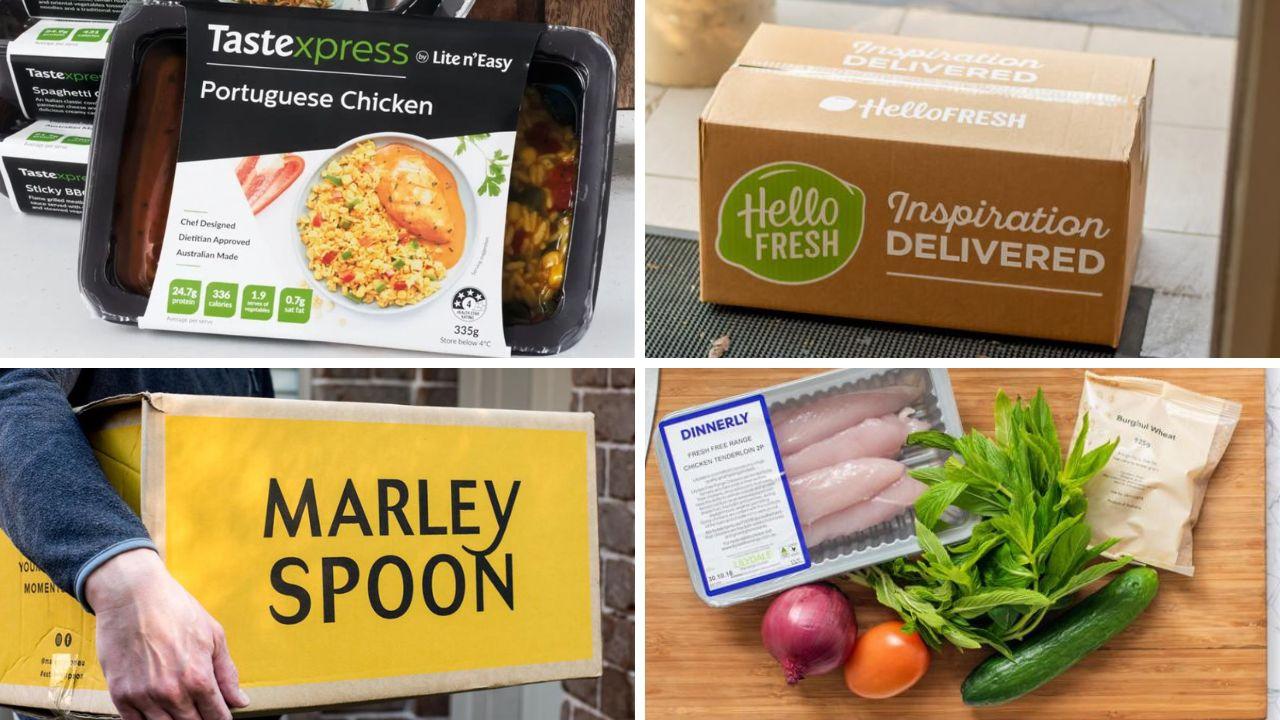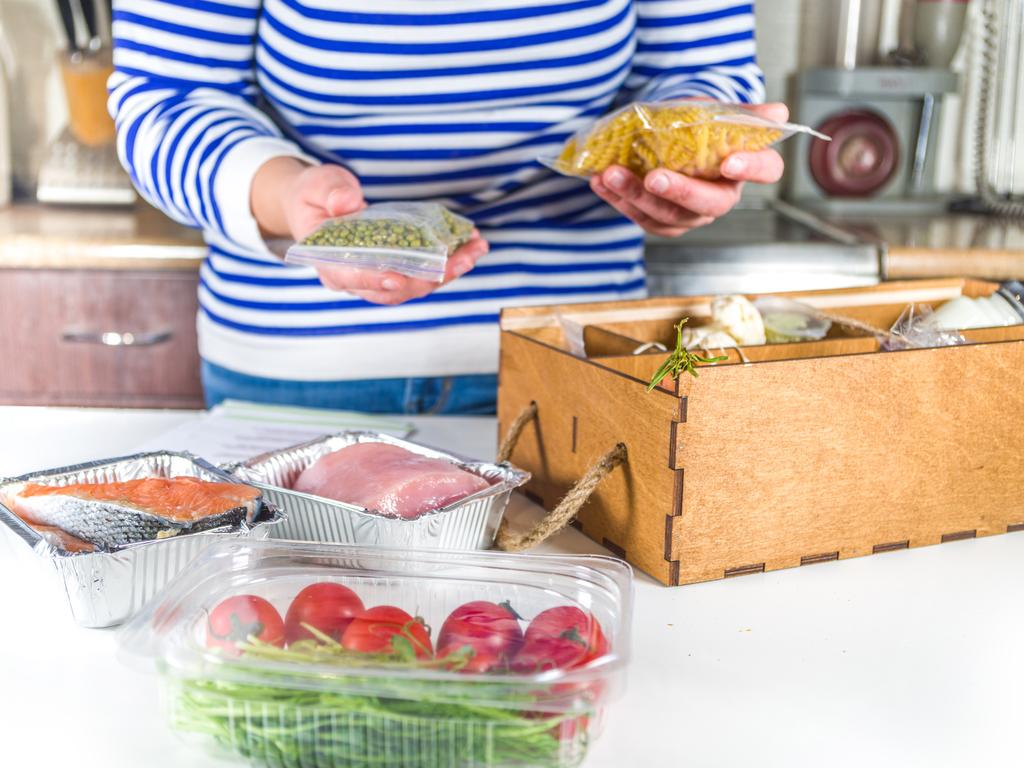Dietitian on which meal kit is the best for weight loss
Using meal kits aren’t always effective to lose weight but there’s one option that dietitian Susie Burrell recommends.

When it comes to dinner, convenience is where it’s at, which is why meal delivery kits have grown so much in popularity.
Not only is the convenience factor incredibly popular, but meal deliveries can offer the meal time inspiration many people lack come 6pm on a weeknight.
One of the biggest issues across all ranges available is that it is tricky to determine the exact cost and nutritional mixes of all the different meal options prior to signing up and ordering.
The other key factor is that while meal kits may keep you out of the supermarket, most brands still require a decent amount of meal prep time, which means if you are not a keen cook, pre-made meals are a much better option, and in most cases have much tighter calorie control than the average meal kit meal.

HelloFresh
When HelloFresh launched in Australia back in 2012, it revolutionised the traditional meal delivery service, offering the first meal kit option in which consumers could cook their own fresh meals at home minus the heartache of shopping for ingredients and trying to decide what to have for dinner.
Since then, HelloFresh remains one of the main players, with plenty of offers and deals to encourage new users.
The meals themselves can best be described as suiting busy families, with hearty serves of carbohydrates such as noodles and rice used to pad out meals and achieve a plate model that offers protein, carbs and veggies.
While there are some lighter, lower calorie options, these are still 650 calories or less, which is not overly low, nor would it suit those wanting to actively control their weight.
The instructions for cooking are clear, but you certainly need to leave plenty of time for meal prep, with the vegetables and a range of proteins including lean fillet steak and fish all needing preparation prior to cooking. Happily, this is made as easy as possible with added sauces and marinades all individually packaged per meal.
Cost: $8-$10 per meal
Pros: Hearty, family friendly meals that are also budget friendly thanks to the higher carb meals
Cons: Few low-calorie meal options for those wanting to eat lighter at night.

Marley Spoon
The second big player in the meal kit market, Marley Spoon started delivering meal kits in Australia in 2015, and now offers a range of tasty recipe options for those who like and enjoy cooking and use meal kits to expand their weekly meal repertoire. These could be described as more indulgent meals, with menu items such as Miso and Ginger Baked Salmon and Mango Tandoori Chicken, and while the menu cards are clear, you will need to dedicate a decent amount of time to prepare, with sauces and seasonings needing prep too. For this reason, Marley Spoon is a meal kit option that will suit those who do enjoy spending time in the kitchen preparing a delicious meal from scratch.
There is also a wide range of different meals, with different nutritional properties, which range in calories from 350-550. However, it is tricky to find those meals with less than 500 calories, which makes Marley Spoon a better option for families who enjoy a wide range of meals, or more active individuals who do not need to eat lighter at night.
Cost: $10-12 per meal
Pros: Wide range of delicious meals to expand the weekly food routine
Cons: Hard to identify the lighter options and plenty of meals that require a decent amount of meal prep.

Dinnerly
The budget and family friendly brand run by Marley Spoon, Dinnerly caters for a time poor, budget aware consumer who is after family friendly meals in a hurry.
With burgers, pasta bakes and tacos popular options, the calories and fat can be a little on the high side but on the whole it is an easy and cost-effective option for busy families who need dinner in a hurry at an affordable price point.
Cost: $6-8 per meal
Pros: Easy, family friendly meal options
Cons: Higher carb options that can also be high in fat

EveryPlate
The budget conscious alternative also made by HelloFresh, EveryPlate options can be described as simpler meal options for those who prefer plainer food, with a minimal number of steps required for meal prep. With a much lower price point per meal than the larger brands, while you pay less you are also paying for fattier cuts of meat, such as chicken thigh and pork mince, rather than leaner fillets.
Most meals are based on a hearty serve of carbohydrate in the form of white rice, white bread and pasta and a smaller volume of vegetables, of which carrots, zucchini and baby spinach frequent the recipes.
While EveryPlate may not tick the boxes nutritionally for everyone, at this price point they are certainly good value for money for busy families who’d prefer to put a homemade meal on the table than pick up takeaway.
Cost: $4-5 per meal
Pros: Extremely cost effective, less meal prep required than more gourmet delivery options
Cons: Nutritionally the meals can be higher in processed carbohydrates and low in vegetable content.

Lite n’ Easy Xpress
Traditionally Lite n’ Easy has been a meal delivery service, offering a range of prepared and calorie-controlled meal plans for those wanting to lose weight, or simply eat a healthy diet minus the food prep.
More recently, Xpress has launched, in which a meal kit offers the ingredients and instructions to prepare a meal in 15 minutes. Unlike other meal kits, the Xpress range includes pre-cooked proteins, so meals are literally adding the vegetables and seasoning and bang, you have dinner. This makes Xpress an extremely easy, time efficient way to prepare your own dinner, and with at least two vegetable serves per meal, from a nutritional perspective this option trumps most of the other meal kits on the market.
The other bonus is that the information provided for consumers is easy to read and the nutritional information and ingredient lists are clear and easy to understand.
Cost: $9-$10 per meal
Pros: At least two serves of vegetables per meal and a large calorie-controlled range of options
Cons: The pre-cooked ingredients do have the ‘packaged’ taste and smell, making them slightly more processed than 100 per cent fresh ingredients.
Susie Burrell is a dietitian and nutritionist and holds a Master’s degree in coaching psychology






